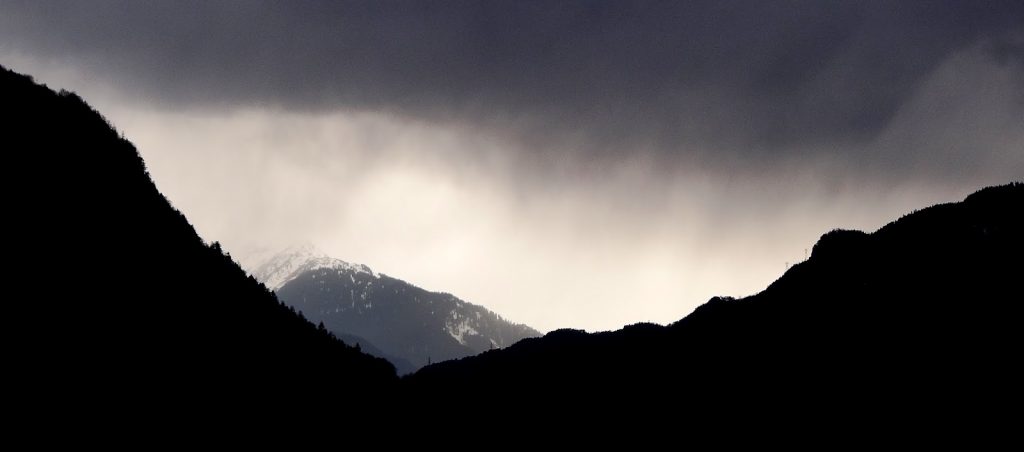Why Coaching?
Coaching shouldn’t be just seen as a solution for problems. It is much better when the subject is developed correctly and the coaching is just someone opening new doors for you to pass through. When this is done correctly then even with only a minimal amount of skiing annually there is lasting progress.
Matt – who moves quite naturally but very little and gets on the back of the ski boots.
Joe who has a two footed push out to the side and a postural issue with the hip joints relatively locked up.
Cress who moves her body in the wrong direction and is completely unstable and insecure.
Sam who gets stuck on the back of the ski boots – then the front of the boots, rotates and drops her arms.
Naz who has a big upper body rotation and strong tendency to stem.
Not a lot of time to deal with all of this – let alone any single case! However the starting point has to be with the most vulnerable – and that is Cress with the centre of mass moving disruptively in the wrong direction. This is also a useful common denominator to being with where everyone can gain insight and benefit.
Dynamics
We began with the standard introduction to dynamics. Using the “Search” feature on this blog you can find dozens of detailed explanations of this – and how it is taught. We followed the standard process of using my shoulder as a support and experimenting with the results of different ways of pushing against me. Fortunately nobody had any significant problems putting that into action so we didn’t have to spend too long with this. Cress understood straight away that she had been previously taught to move in the wrong direction to get pressure on her ski. Balance is about placing your centre of mass over your support foot. Dynamics is about accelerating your centre of mass away from your support foot – and that’s what skiing requires. The main objective here is to simply get everyone working generally in this direction and to start to give Cress some reason to feel a bit more confident.
The video below is towards the end of the session when everyone had been developing their dynamics for a few hours.
Spring in the valley (today) …
Cress was feeling a bit intimidated at this point and wanted to bail out but I persuaded her to stay on and modified the plan of the lesson to help to encourage her more. She was already doing well with the dynamics but still felt the speed and steepness were too challenging.
Mental Training
I pointed out that her fear was probably justified from previous experiences but that should slowly change now as the new mechanics and coordination were working. In addition it is important to work on the mental side of things were fear is present. You have to re-program your mind as much as your body and start to take charge of your internal dialogue with yourself – cutting out a lot of the negative chatter and and replacing it deliberately with positive suggestions. Even focusing on your exercises helps because focusing removes the chatter in the mind and relaxes it. I emphasised the importance of focusing and re-focusing when you get distracted. Repeating this constantly strengthens the mind in addition to relaxing it.
Pivot
I really didn’t want Cress to go away without first of all learning about the “pivot” because so much control and security can be gained from this. Thankfully she responded positively to the encouragement and decided to continue. I first of all demonstrated a pivot then physically assisted everyone through a single pivot to feel what it is like. Nobody actually managed one cleanly on their own but they all at least knew what to aim for.
Skiing is holistic and that means that even if you remove a part of it the whole will continue to work to some degree. It also means that anything you are working on doesn’t have to be perfect to get some benefit. Unfortunately this is also why people get away with skiing very badly!
Nobody could identify that the pivot was different from everything else they had seen because the turn was initiated from the outside edge. That’s not surprising – it took me a lifetime to be able to see it for myself even though I’d always done it. That’s how strong the effect of educational “brainwashing” actually is! All fall-line skiing is done this way and it always has been.
We did a static exercise to feel the adductor muscles being properly used – pulling the tip of the ski against my planted ski pole. When I was satisfied that everyone was able to use the adductors then we tried it in action – using the ski poles for support planted downhill of the heel of each skier. Everyone still had a tendency to push out with the abductors (outside of leg) into a stem – but that’s normal at this stage. The snowplough and stemming taught previously has trained inappropriate coordination. Everything should “pull inwards” and nothing “push outwards”.
Obviously work needed to be done on upper/lower body separation but there was not enough time to even begin looking at this so everyone still had strong body rotation problems. Sam especially put in some good efforts at the pivot though.
I explained that this way of skiing meant that the skis were always used on their uphill edges and so could give the maximum braking control. To keep the skis on the uphill edges it is easiest if the feet are kept close together downhill of the body. The skis only go flat for a moment when pointing straight downhill then they are rapidly back on the new set of uphill edges.
When moving forwards and using dynamics we had been controlling speed through the line – finishing the turns (not pushing the feet out to the side in a skid – Joe!). With the pivot the feet were not pushed outwards either – the ski tips were slid inwards. Pushing outwards is not an option when standing on the uphill edges anyway.
Looking towards Meribel from the valley below with the weather changing…
We needed to clarify “timing” issues so I explained the “down /up” motion which compares to a motorbike. Joe and Sam had been trying to plant their poles by sinking down at the end of turns even when using dynamics so they could now see why this was inappropriate as the timings conflicted. The pole is useful in the pivot where it can be used as a support – but it is disruptive in flowing turns unless used only as a “touch” just after entry into a new turn – but there was not enough time to look at that.
Sam had excellent natural feel for the timing.
Skating
We had a very rushed intro to skating and not enough to be of much use. I wanted to get Joe using his legs a little more independently in particular and to relate the timing of the skating action to the timing of the dynamics – but again this was too brief. Perhaps some of the idea got through enough to reinforce the basic idea of timing.
Conclusion
Joe has a postural issue that needs to be addressed and reverts to both a strong two footed heel push and shoulder rotation when out of his comfort zone – but he understood a lot and should be able to work on it.
Cress was visibly skiing more parallel in the video due to dynamics and her confidence in general was growing.
Sam had some issues with fore/aft control but once again there was no time to look at that. She did a very good job of developing all of the principles that we were working on.
Matt developed the dynamics very well and that was expected by me from the start. The pivot will take some work though! Some fore/aft issue also to straighten out.


